Trace dependents can make it easier to find which cells track data, but can also make the sheet a bit messier. We’ll use a simple dataset as an example of how you can remove these arrows.
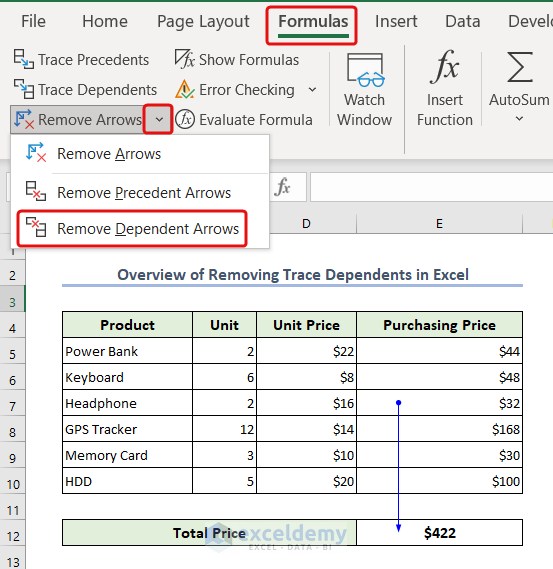
Download the Practice Workbook
How to Remove Trace Dependents in Excel: 3 Swift Methods
Method 1 – Using the Formulas Tab to Remove Trace Dependents
Case 1.1 – Using the Remove Dependents Arrows Command
Here’s a dataset where you can see a trace-dependent arrow on cell E7.
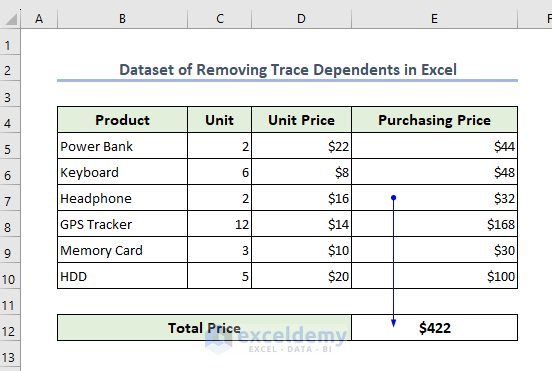
- Select cell E7 and go to the Formulas tab.
- Click the drop-down menu of Remove Arrows from the Formula Auditing section.
- Select Remove Dependent Arrows.
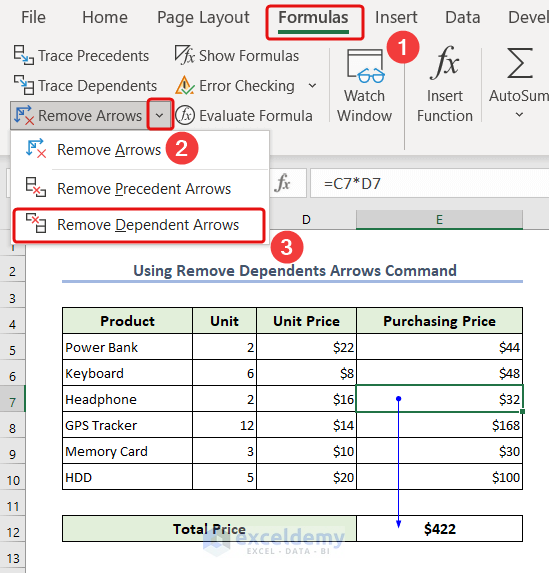
- You can see the trace-dependent arrow is removed.
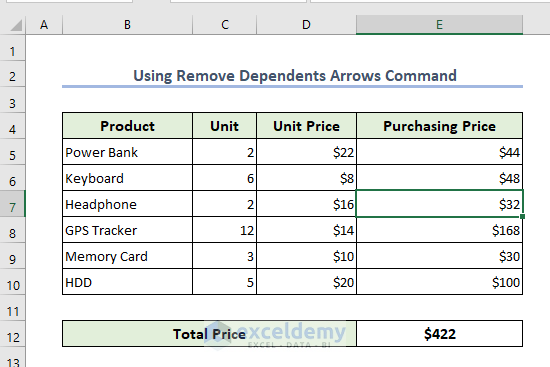
Case 1.2 – Using the Remove Arrows Command
- Select cell E7 and go to the Formulas tab.
- Click on the Remove Arrows option from the Formula Auditing section.
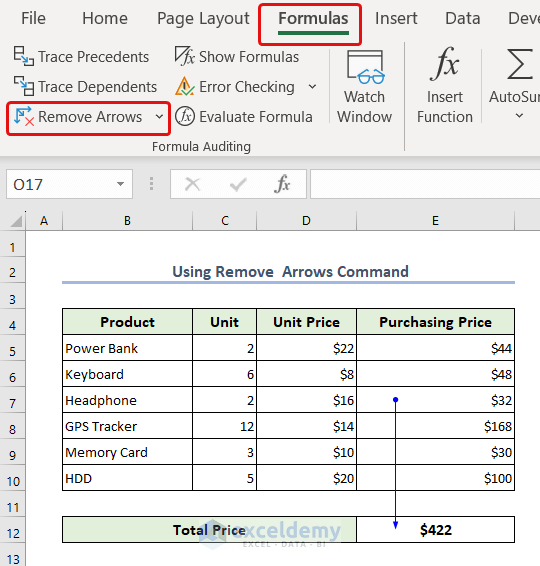
- The trace-dependent arrow has been eliminated.
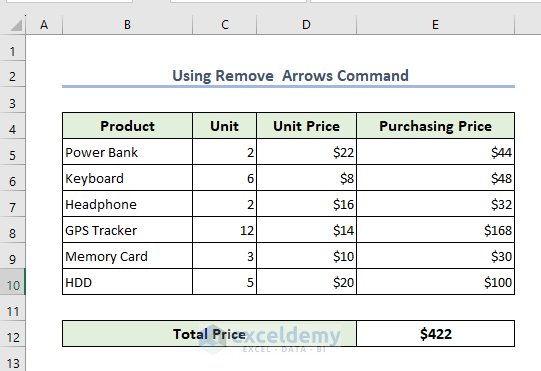
Method 2 – Using Keyboard Shortcuts to Hide the Trace Dependents Arrows
- Press Alt + T, then U, then A.
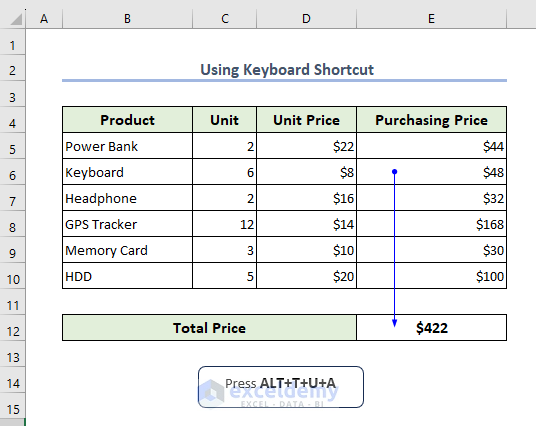
- All the tracer arrows are removed from the sheet.
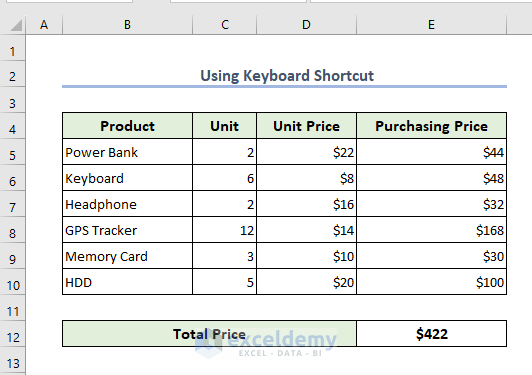
Method 3 – Remove All Trace Dependent Arrows Using the Advanced Option
- Go to the File tab and right-click on it.
- Go to the Customize the Ribbon… option.
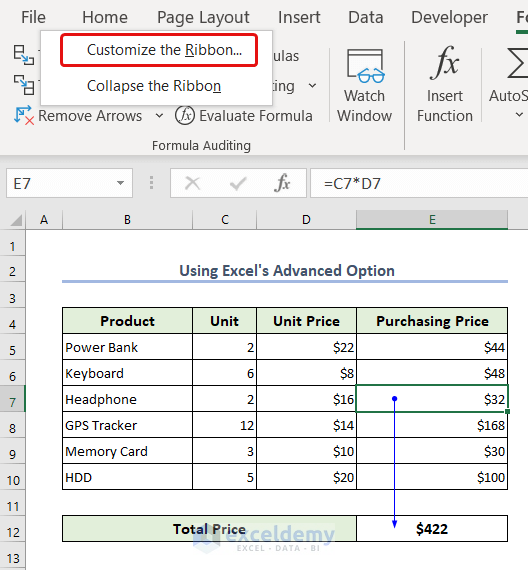
- The Excel Options window will appear.
- Go to Advanced tab and check Nothing (hide objects) from the Display options for this workbook section.
- Press the OK button.
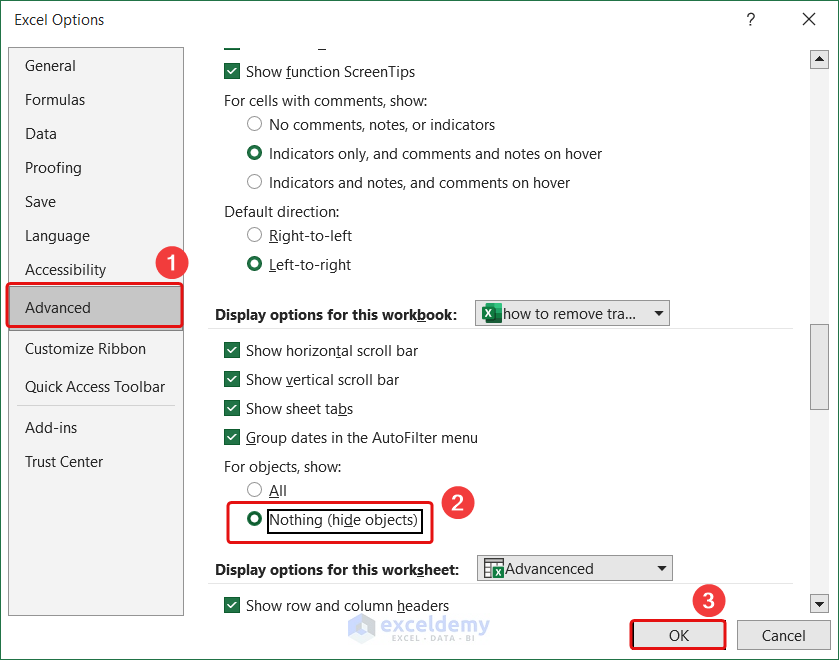
- All the trace arrows have been removed.
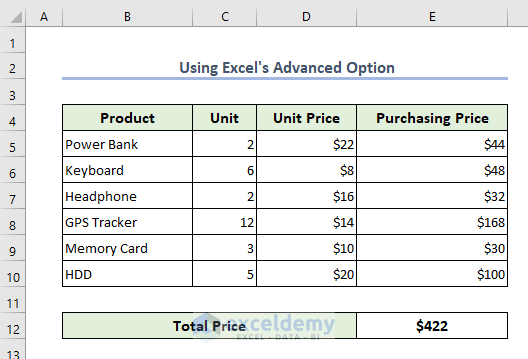
How to Remove Trace Precedents Arrows in Excel
- Go to Formulas, select Remove Arrows, and choose Remove Precedent Arrows.
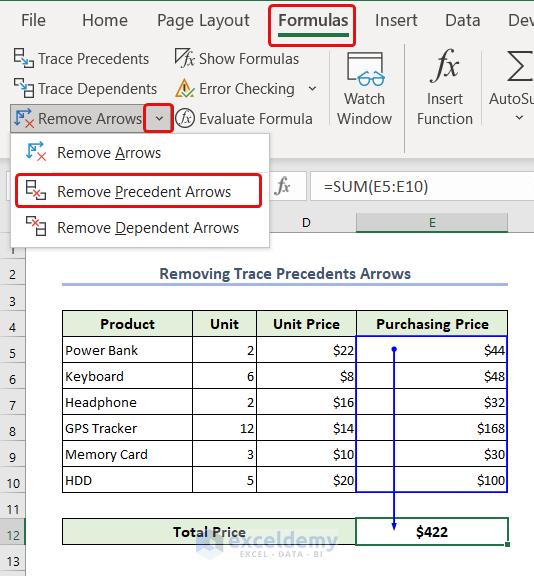
- The precedent arrows have been removed.
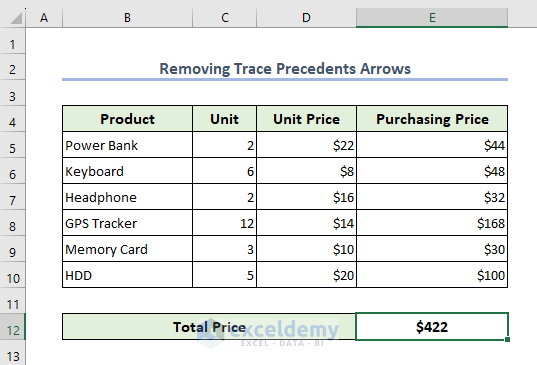
How to Remove Red Trace Arrows from Excel
The red arrow has the same function as the traditional blue ones, but signify that they’re passing error values.
- Select cell E7 and go to the Formulas tab.
- Click on the Remove Arrows option.
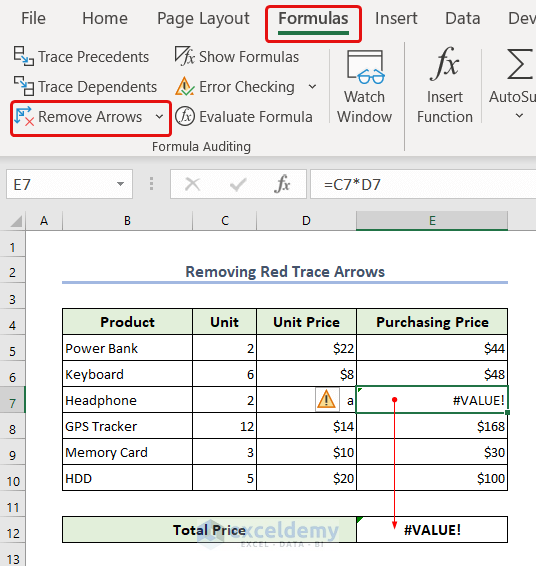
- All the red arrows were removed.
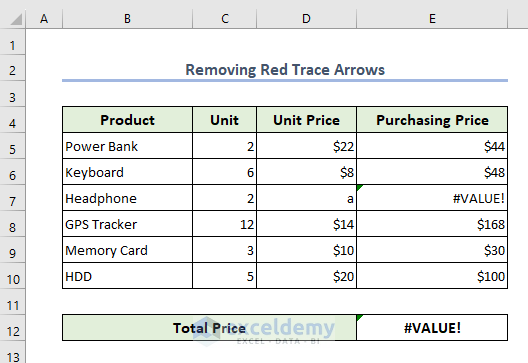
Things to Remember
- If there are more than one trace dependents arrow in your datasheet, use the Remove Dependent Arrows command a couple of times to remove the arrows.
- Before removing trace dependents, double-check the arrows and make sure they accurately represent the relationships between cells. Sometimes, complex formulas can create confusing arrows.
- If you use trace dependents more often, you’ll become more familiar with your spreadsheet’s structure and interconnections.
Frequently Asked Questions
What are Tracer Arrows?
While working in Excel, we might want to determine the cause of an error, as well as the precedence and dependent cells of the active cell. Generally, arrows are used to determine that. These are called Tracer Arrows.
How do I find Trace Dependents in Excel?
To locate Trace Dependents, select the cell, and then click on the “Formulas” tab on the Excel ribbon. Look for the “Formula Auditing” group and click on the “Trace Dependents” button. This will display arrows pointing from other cells that depend on the value in the selected cell.
Can I remove Trace Dependents for multiple cells at once?
Select all the cells you want to remove the Tracer arrows from, then click on the “Remove Arrows” button in the “Formula Auditing” group on the “Formulas” tab.
Can I remove Trace Dependents when the “Trace Dependents” button is grayed out?
If the “Trace Dependents” button is grayed out, it means Excel is unable to find any cells that depend on the selected cell. In this case, there are no Tracer Dependents to remove.
Get FREE Advanced Excel Exercises with Solutions!

